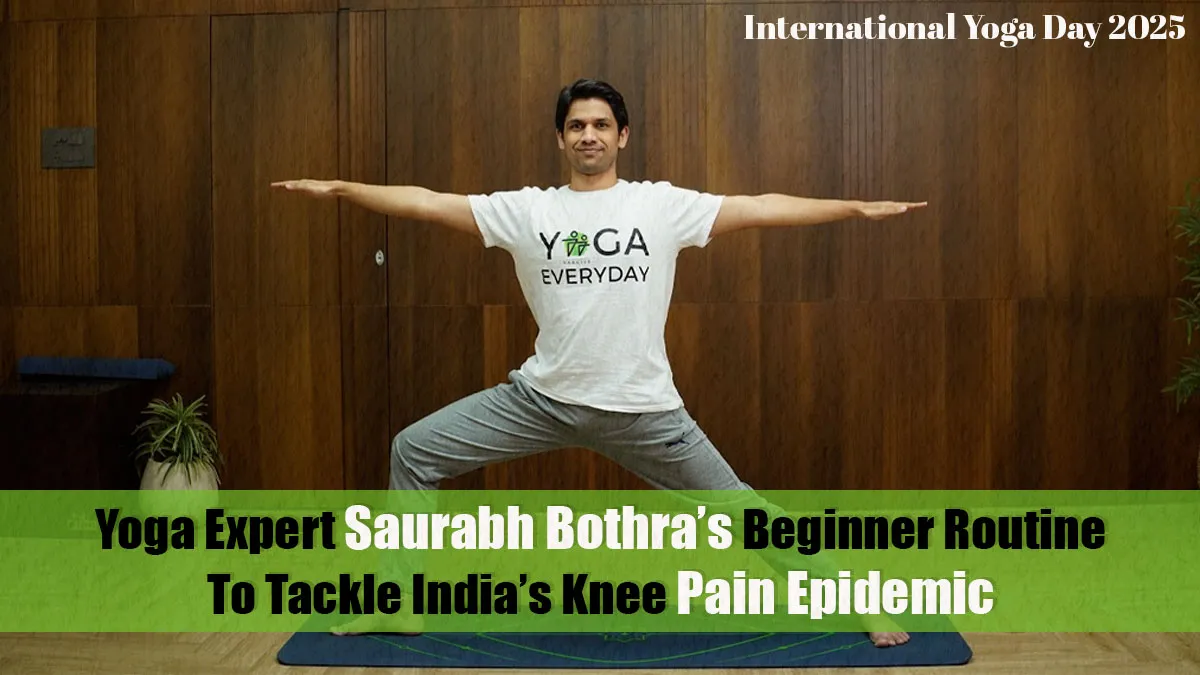
Knee pain isn’t just a problem for older adults anymore. With long hours of sitting, lack of movement, past injuries, or just the wear and tear of everyday life, more and more Indians, young and old—are struggling with stiff, aching knees. It’s turned into a full-blown epidemic: over 150 million Indians face some knee problem, and nearly 40 million need total knee replacement.
Table of Content:-
While medical treatment is often necessary, yoga offers a gentle path to relief. By strengthening muscles and improving alignment, yoga helps reduce joint stress and manage pain, making it an effective, natural complement to conventional care.
On this International Day Of Yoga, which is observed on June 21, every year, we spoke to Saurabh Bothra, Government-Certified Yoga Trainer, Co-Founder, HaBuild, who listed yoga asanas to heal your knee pain.
How Yoga Can Help With Knee Pain
- Mobilisation: For knee joint pain, yoga can facilitate better mobility by increasing flexibility, strengthening stabilising muscles, and ensuring joint stability.
- Restoration: As we age, managing knee pain can get challenging, but practising the right yoga asanas can help ease stiffness and build overall muscle strength, making daily movement more comfortable.
A 2024 meta‑analysis of 8 randomised controlled trials involving 756 patients found that yoga significantly reduced knee pain, and stiffness, and improved function compared to controls. While benefits for daily activities and quality of life were less clear, these results confirm yoga’s meaningful physical impact.
Beginner Routine To Tackle India’s Knee Pain Epidemic
You can start practicing these asanas 3-4 times a week for the first month, and then gradually move to daily practice to notice significant improvements in your health.
1. Wide-Angle Seated Forward Bend (Upavistha Konasana)
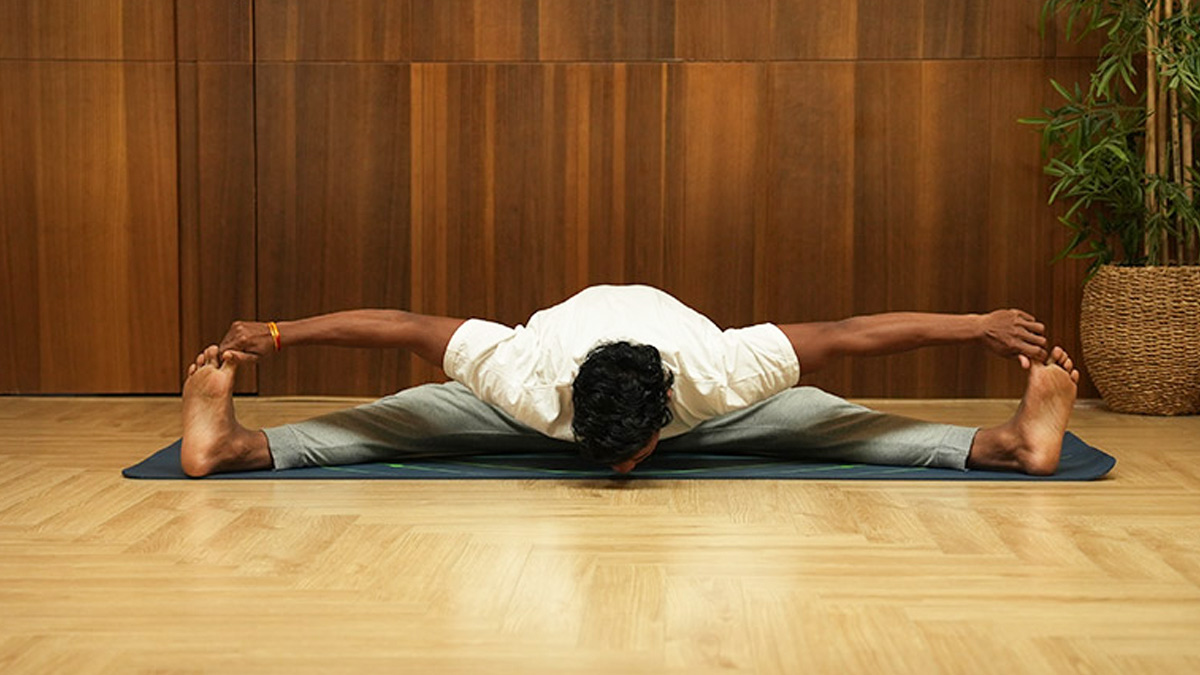
This is a seated yoga pose that stretches your legs, hips, and lower back.
Instructions
- Place yourself in a comfortable position and spread your legs wide apart.
- Keep your feet flexed and your spine straight.
- Slowly, lean forward so that you can reach your hands towards your feet or the floor in front of you.
This pose helps enhance flexibility in the legs and hips, eases tension in the lower back, and may also reduce knee pain by gently stretching the surrounding muscles.
2. Virabhadrasana III with a Bent Standing Leg
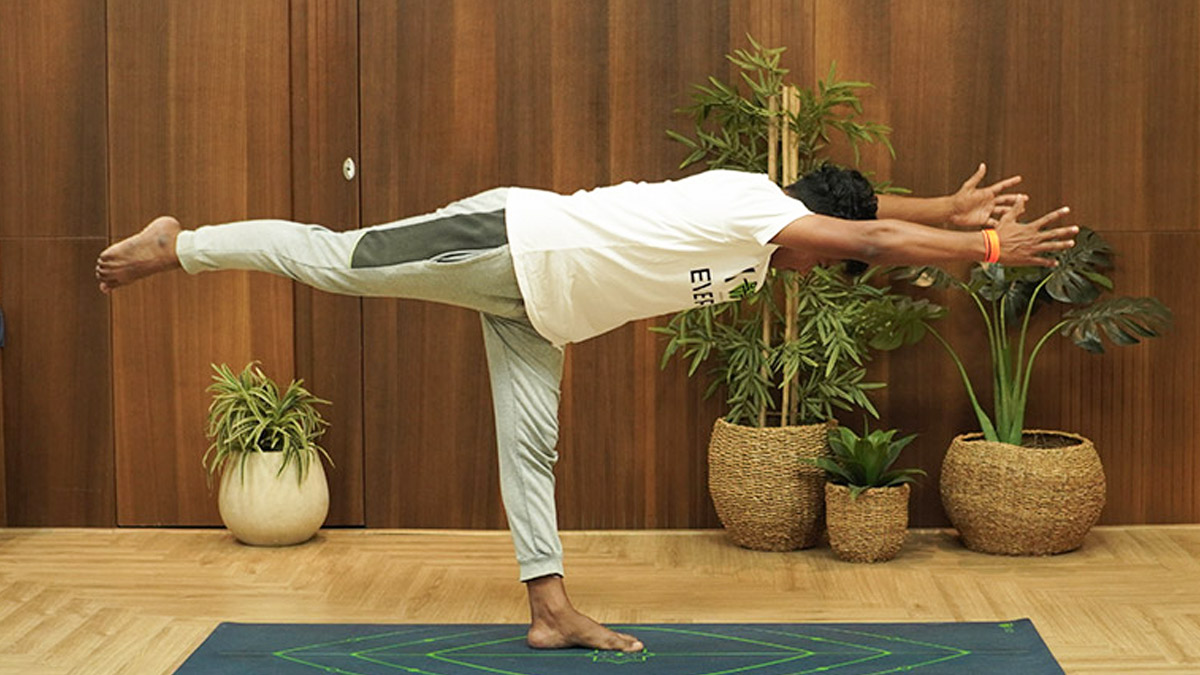
This balance pose builds strength in the legs, core, and back.
Instructions
- Start by standing tall.
- Slightly bend one knee and lift the opposite leg straight behind you.
- Extend your arms forward and keep your torso aligned to form a “T” shape with your body.
This pose improves balance, strengthens muscles around the knee, and increases leg stability, making it an effective long-term tool for controlling knee pain.
Also Read: International Yoga Day 2025: Can Yoga Help In Managing Diabetes? Find Out Here
3. Chair Yoga
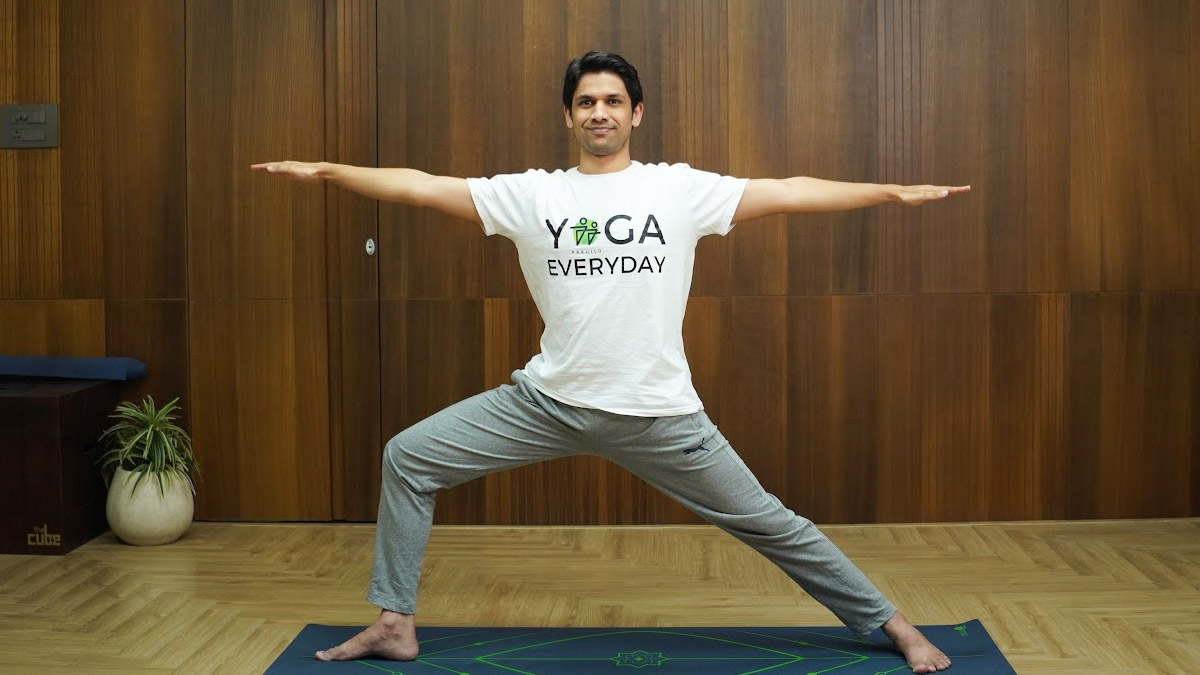
Chair yoga is a gentle and accessible form of yoga performed while seated on a chair. It involves simple movements and basic stretches that help improve flexibility in your knees, strengthen the surrounding muscles, and reduce pain.
You can also try other simple chair yoga poses, such as seated leg lifts, seated marches, and light stretches targeting the legs and hips.
Chair yoga is particularly useful for older people or those with mobility problems since it relieves the knee of pressure and provides a means of exercising safely.
4. Modified Tree Pose (Vrikshasana)
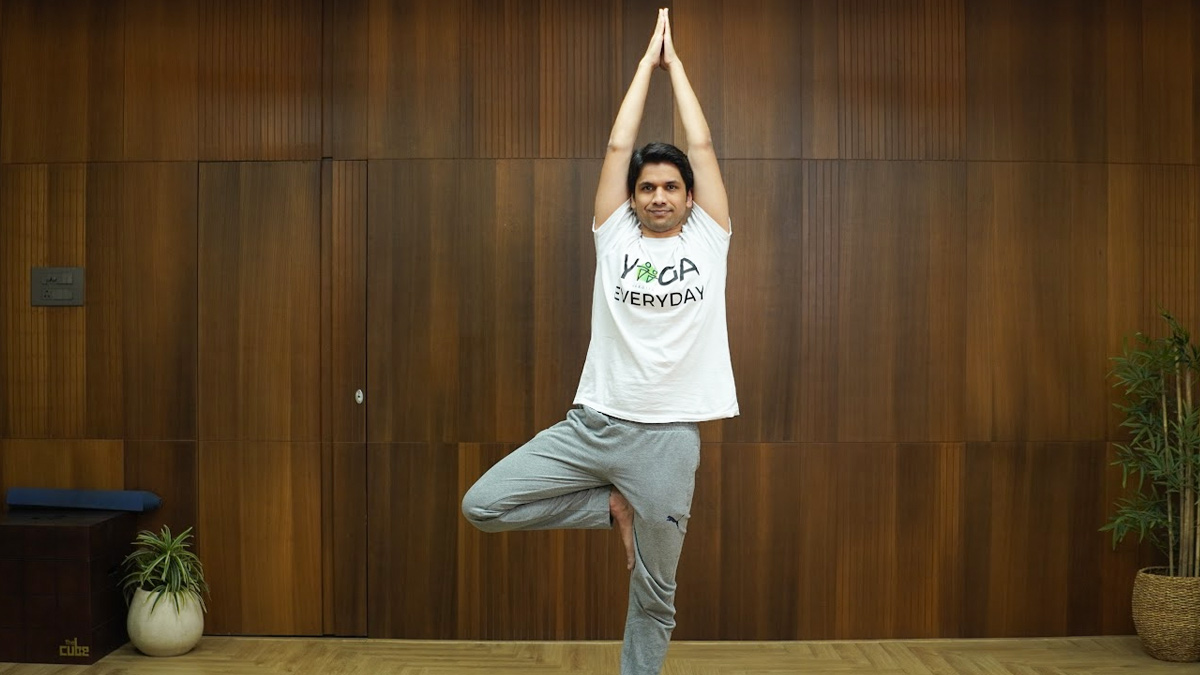
This pose can help improve balance, strengthen the legs, and enhance overall stability, providing significant relief from knee pain. This modified version is gentler on the knee, making it suitable for those with joint sensitivity or pain.
Instructions
- Begin by practising the pose with the lower foot placed on the inner ankle instead of the upper thigh.
- Avoid pressing the foot directly against the knee to reduce joint pressure
- Keep the standing leg firm and activated to maintain balance
Practising yoga for weight loss when dealing with knee pain can be tricky, but this pose offers a supportive option. It helps tone muscles and boost metabolism, aiding in healthy weight management. The pose also promotes better body alignment, making it especially beneficial for menopausal women who experience persistent knee discomfort and stiffness during this phase.
5. Half Boat Pose (Ardha Navasana)
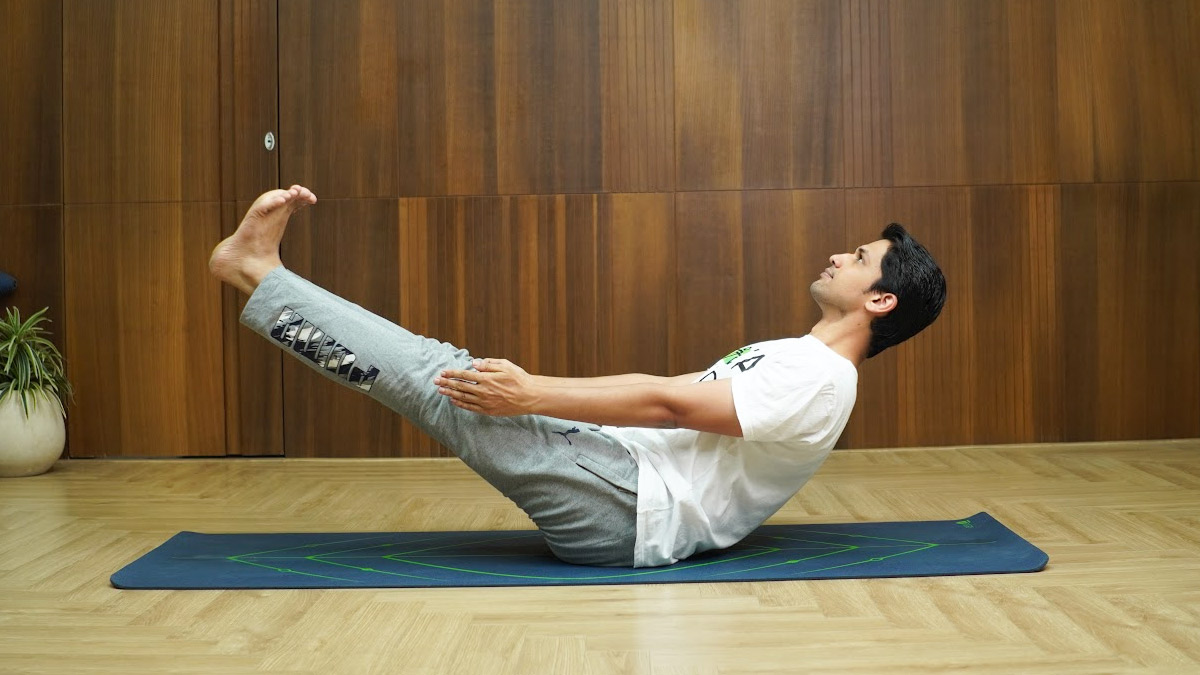
This yoga pose strengthens the core, tones the abdominal muscles, and increases metabolism while supporting improved balance.
Instructions
- Position yourself on the ground with your knees bent and feet flat on the floor.
- Lean back slightly while keeping your spine straight.
- Raise your feet off the ground, keeping your shins parallel to the floor.
- Extend your arms forward, keeping them at shoulder height.
This asana supports weight loss by increasing calorie burn without putting stress on the knees. It also improves posture and helps release lower back tension, making it a great choice for managing common menopausal symptoms like stiffness and joint sensitivity.
Also Read: Is Exercising During Periods Safe? Expert Shares What You Need To Know!
Precautionary Measures To Follow While Doing These Asanas
- Do not overstretch your body: Avoid overstraining your body beyond its comfort zone. Yoga for knee pain during old age is good but needs to be performed as per the body's ability. Stretch slowly and do not perform if you feel any kind of discomfort or pain in the body, especially in your knees.
- Use some supportive props: You may support your knees in these poses using yoga blocks, rolled towels, or cushions. A well-cushioned yoga mat can also make the practice more comfortable.
- Focus on Alignment: Keep your knees, hips, and ankles properly aligned in each pose to avoid unnecessary strain or injury. If you're practising yoga for weight loss with knee pain, be mindful not to overdo it or twist your knees in unnatural ways.
- Engage your muscles: Begin with engaging the muscles of the knee joint, such as thighs and calves. This will offer support and assist with the alleviation of stress on the joint itself.
- Consult a professional always: If you’re dealing with any existing knee issues or past injuries, it’s best to check with a healthcare professional before starting to ensure you’re practising safely.
[Disclaimer: This article contains information provided by an expert and is for informational purposes only. Hence, we advise you to consult your professional if you are dealing with any health issue to avoid complications.]
How we keep this article up to date:
We work with experts and keep a close eye on the latest in health and wellness. Whenever there is a new research or helpful information, we update our articles with accurate and useful advice.
Current Version